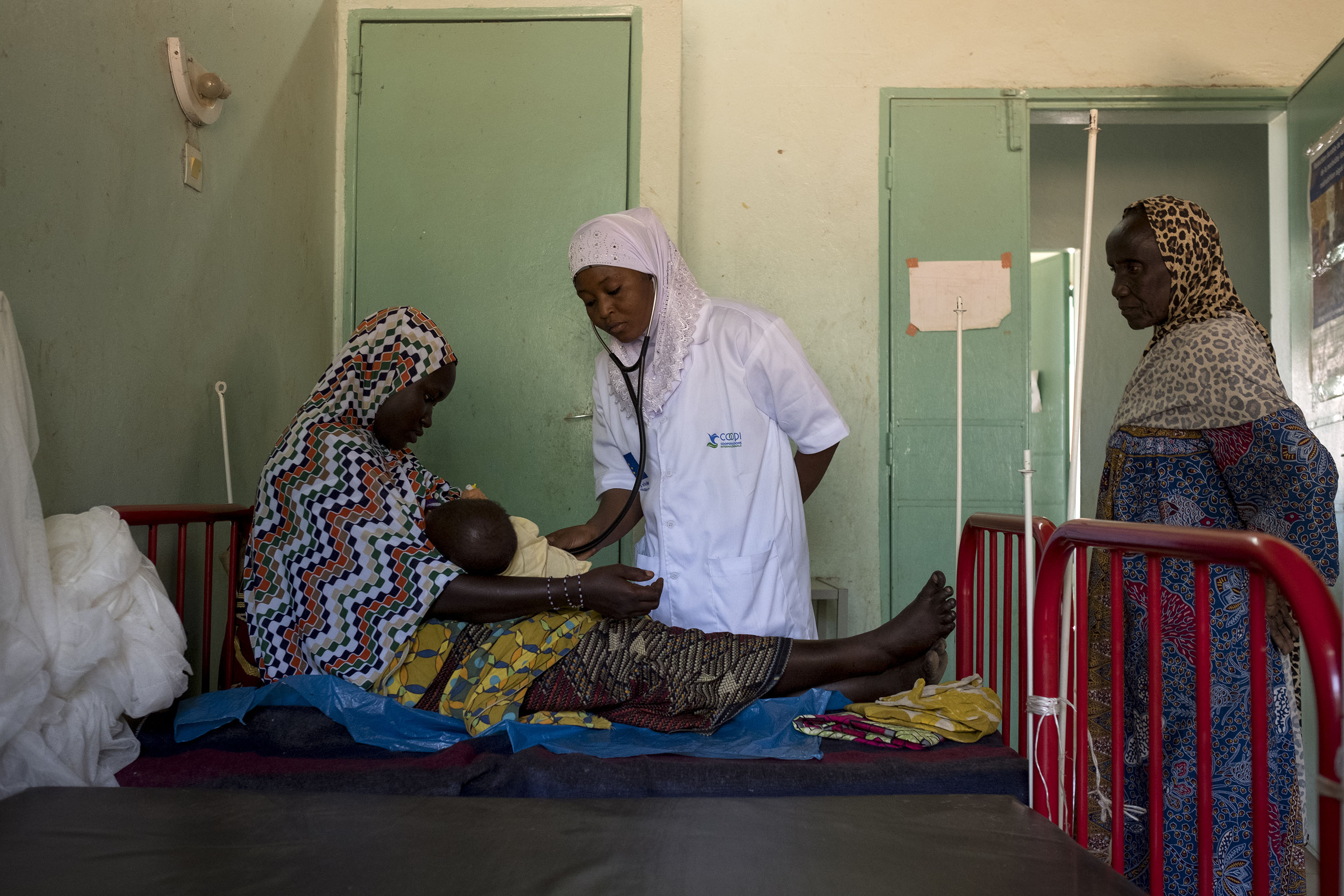World refugee day. Over 123 million people forced to flee their homes
According to the Global Trends 2025 report by the United Nations Refugee Agency (UNHCR), released to mark World Refugee Day (June 20), a record 123.2 million...
Read more
Le contenu en ligne est aussi disponible en français. Passer au français
Since 2012, COOPI has been working in Niger in the context of several complex humanitarian crises by developing integrated multi-sector intervention programs.
Since 2012, COOPI has been present in Niger, where it initially promoted nutrition and food security as two of the most important areas of its intervention and developed a strong expertise in the Tillabéry region.
As of 2015, COOPI focus shifted on the education sector in Diffa. Taking into account the displacement of people, the beneficiaries needs and its experience in Sierra Leone, COOPI also included the sectors of Protection, Mental Health, Psychosocial Support, and Non-Formal Education in its interventions.
In 2017, COOPI implemented a Food Security project, taking into account climate change in support of farmers in the Doutchi department, Dosso region.
In 2018, COOPI expertise in Protection, Mental Health and Psychosocial Support as well as its actions alongside UNHCR targeting refugees from Nigeria in Diffa, formed the basis of its intervention in the framework of the Emergency Transit Mechanism (ETM) project. The initiative benefited asylum seekers detained in Libya, who - thanks to an agreement between UNHCR and the Government of Niger - were temporarily hosted in Niger, before leaving for a host country.
As of 2019, COOPI implemented Rapid Response Mechanisms in Primary Health, Nutrition and Health, in support of displaced persons, fleeing attacks by Non-State Armed Groups in Tillabéry and Tahoua regions.
Interventions in formal and non-formal education have continued in the regions of Diffa, Tillabéry and Tahoua, to meet the needs of children and young people and ensure their right to education, even during armed conflicts.
From 2022 onwards, COOPI has carried out RRM interventions in education, to support children of displaced persons.
Also from 2019, COOPI has implemented Disaster Preparedness interventions to respond to various crises and support local actors' first response skills and emergency capacity building.
In 2020, the development of small businesses has become another key sector to deal with the country's economic crisis in the Agadez region, especially for young people.
Today, Niger faces several complex humanitarian crises. In this context, COOPI collaborates with institutional partners to develop integrated multi-sectoral programmes aiming to improve access to basic services, strengthen the resilience of populations and mitigate the impact of climate crises in different parts of the country.
In the Diffa region, COOPI is primarily implementing Protection, Education in Emergency, Psychosocial support and mental health-related projects. In the north of the country - Tillabéri and Tahoua regions - COOPI adopts Rapid Response Mechanisms (RRM) to intervene in the nutrition and health sectors.
In the Maradi area, COOPI deals with mental health and offers psychosocial support, promotes primary health and implements programmes to fight against malnutrition.
In the Agadez region, COOPI actively intervenes in the areas of migration, mental health, and psychosocial support, while promoting small businesses.
In all areas, COOPI also implements disaster risk reduction programmes.
In Niger, COOPI carries out protection actions mainly in areas with a high presence of displaced persons, refugees, and asylum seekers, as part of integrated emergency response interventions. The main protection activities implemented by COOPI in Niger are:
projects
beneficiaries
In Niger, COOPI carries out protection actions mainly in areas with a high presence of displaced persons, refugees, and asylum seekers, as part of integrated emergency response interventions. The main protection activities implemented by COOPI in Niger are:
projects
beneficiaries
In Niger, COOPI carries out activities to promote basic health, mental health and psychosocial support. COOPI namely carries out activities, including:
projects
beneficiaries
In Niger, COOPI implements programmes to fight against malnutrition, namely by:
projects
beneficiaries

COOPI main areas of intervention in Niger in the near future will be:
Rapid Response Mechanism (RRM) • Health • Mental health and psychosocial support • Food Safety • Child Protection and GBV Gender Based Violence sub-cluster • Education • GTABNA Abris Bien Non-Alimentaires • GTGH Groupe Techinque Genre Humanitaire • IMWG Information Management Working Group • Nutrition • Wash • Intercluster • Logistics • Administration and Human Resources • Multisector Cash (MSCWG) • Access • Forum humanitaire • Equipe Humanitaire Pays
Mécanisme de réponse rapide (RRM) • Santé • Santé mentale et soutien psychosocial • Sécurité alimentaire • Protection et sous-groupe Protection de l'enfant et violences basées sur le genre • Éducation • GTABNA Abris Bien Non-Alimentaires • GTGH Groupe Technique Genre Humanitaire • IMWG Groupe de travail sur la gestion de l'information • Sécurité nutritionnelle • WASH • Intercluster • Logistique • Administration et ressources humaines • CASH multisectoriel (MSCWG) • Accès • Forum humanitaire • Équipe Humanitaire Pays
Italian Embassy in Niger • Cellule Crises Alimentaires (CCA) • Cellule de Coordination du Systéme d'Alerte Précoce (CC/SAP) • Dispositif National de Prévention et de Gestion des Crises Alimentaires (DNPGCA) • Enseignement technique et de la Formation professionnelle • Ministère de l'Action Humanitaire et de la Gestion des Catastrophes • Ministère de la Jeunesse et des Sports • Ministere de l'Education • Ministère de la Promotion de la Femme et de la Protection de l'Enfant • Ministere de la Culture, du Tourisme et de l'Artisanat • Ministere de l'Aménagement du territoire et du développement communautaire • Ministere de la Santé publique, de la Population et des Affaires sociales • Coordination civilo-militaire (CCM-coord) • Direction Régionale de la Santé Publique (DRSP) • Direction Régionale de l'Enseignement Professionnel et Technique (DRFP/T) • Tribunal de Grande Instance de Diffa • Tribunal d'Instance de Mainé Soroa
ICRD Initiative Communautaire Resilience Developpément
ALIMA • CWW • E4IMPACT • Mercy Corps • MLAL • NRC Norwegian Refugee Council • PUI Francia • Save The Children